Home / News & Events / Engagement Ring Shopping Guide
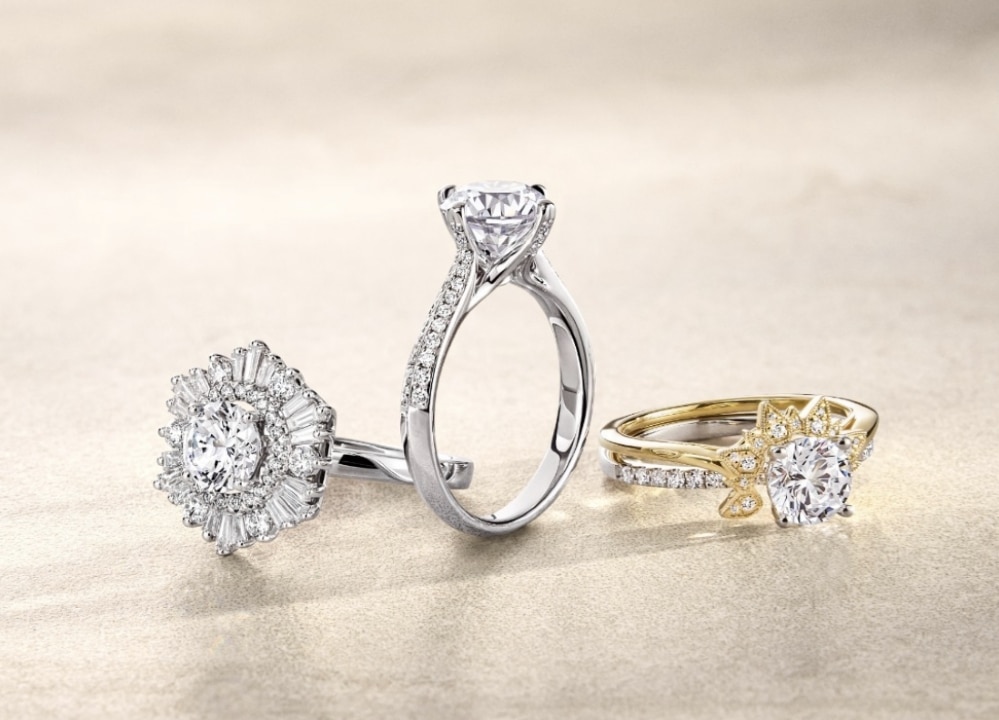
We totally get it. Engagement ring shopping can be a daunting task! There’s a ton of information on diamonds, metal types, and styles to consider. To make this process easier, we’ve created an Engagement Ring Shopping Guide to outline everything you’ll need to know when searching for the perfect ring.
Table of Contents
- What Happens When You Walk Into Our Store
- Ring Anatomy
- Choosing a Mounting Style
- Selecting a Metal
- Choosing Your Stones
- After You Propose
- Engagement Rings From A to Z
- Shop Engagement Rings at Necker’s Jewelers
What Happens When You Walk Into Our Store
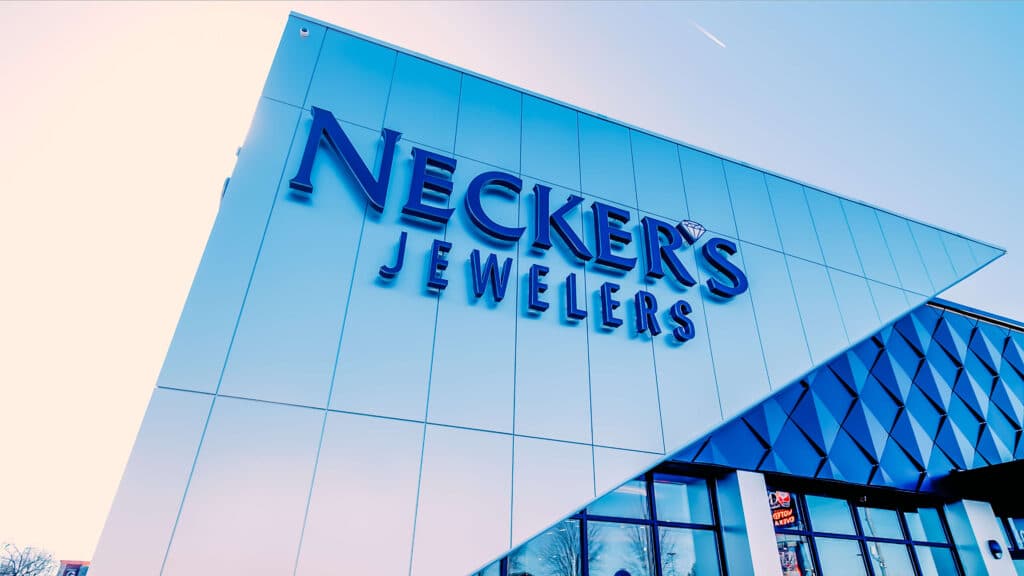
When you enter our store to shop for an engagement ring, don’t let all the choices we have overwhelm you. Our trained sales staff will guide you through the engagement ring shopping process to help you find the perfect ring.
To begin this process, we recommend either walking into one of our stores whenever we’re open or scheduling an appointment to meet with one of our sales associates. Some of our customers are able to select their fianceé’s dream ring in one shopping session. Others, however, will stop in multiple times to look at different mounting styles and stones. Also, keep in mind that if you don’t see exactly what you like in our stores, we can always order or custom design something that’s perfect for you and your future fianceé!
If you’re interested in shopping for engagement rings online, or want to see some of the jewelry we have in our store, we have a selection of engagement rings on our website. We also have more options in our stores in DeWitt and Davenport, IA for you to choose from.
Ring Anatomy
Below we’ve outlined a few significant parts of an engagement ring. You may want to know these, particularly when considering what style and setting of ring you’re looking for. Our sales associates also use some of these terms when you come into our store to shop for an engagement ring.
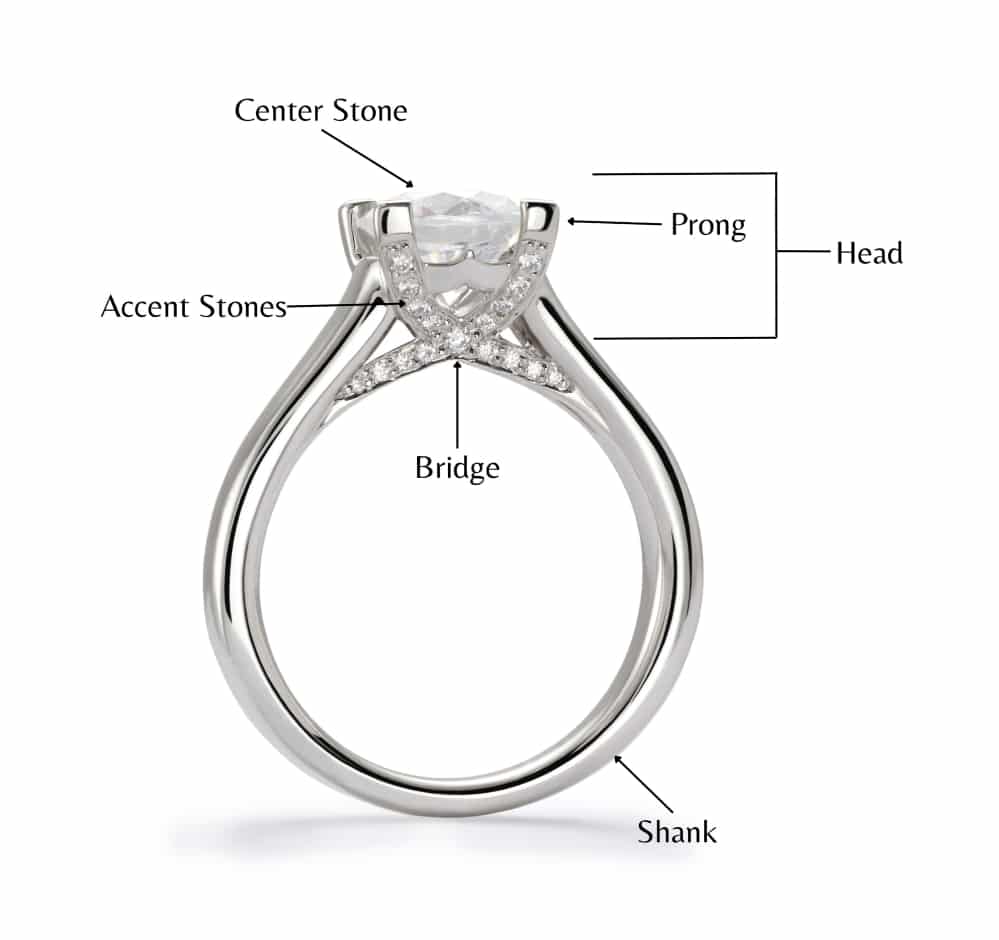
Choosing a Mounting Style
What’s a Semi-Mount?
You’ll likely hear the term “semi-mount” used at some point during the engagement ring shopping process. A semi-mount is an engagement ring that either has no stone set in its center, or has a cubic zirconia set as the center stone. When purchasing a semi-mount, you’ll also want to purchase a loose diamond or gemstone that can be set into the center of the ring.
Common Ring Settings and Styles
While this list isn’t exhaustive, here are some of the main ring settings you’ll come across when shopping for an engagement ring. An engagement ring’s setting has a significant impact not only on the look of the ring, but also on the security of the stones set into it.
Solitaire Setting
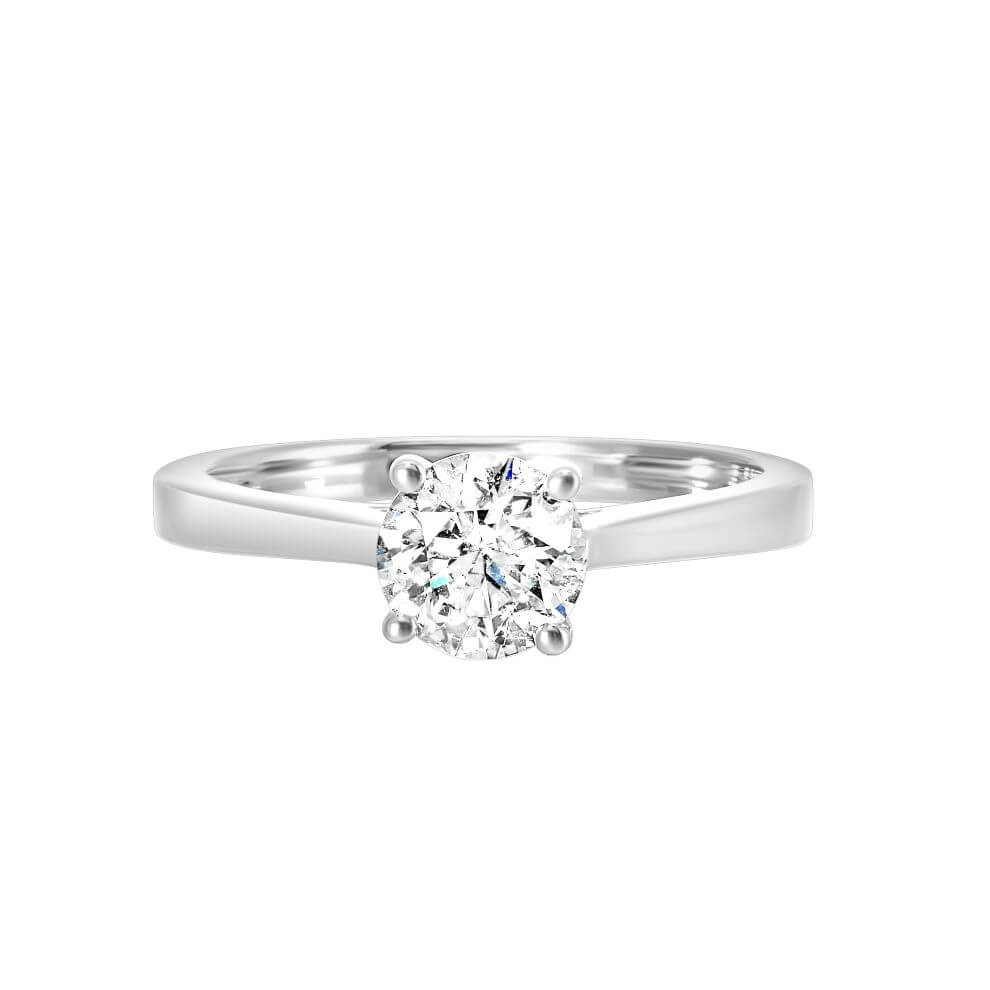
This ring setting consists of a single center stone without any other diamonds or accent stones.
Halo Setting
Halo settings consist of a center stone surrounded by smaller stones. This ring setting is incredibly popular because it helps make the center stone on your ring look larger.
There are two different types of halos: traditional halos and hidden halos.
Traditional halos are positioned around the center stone. You can easily see these halos when looking at the engagement ring from the top view.
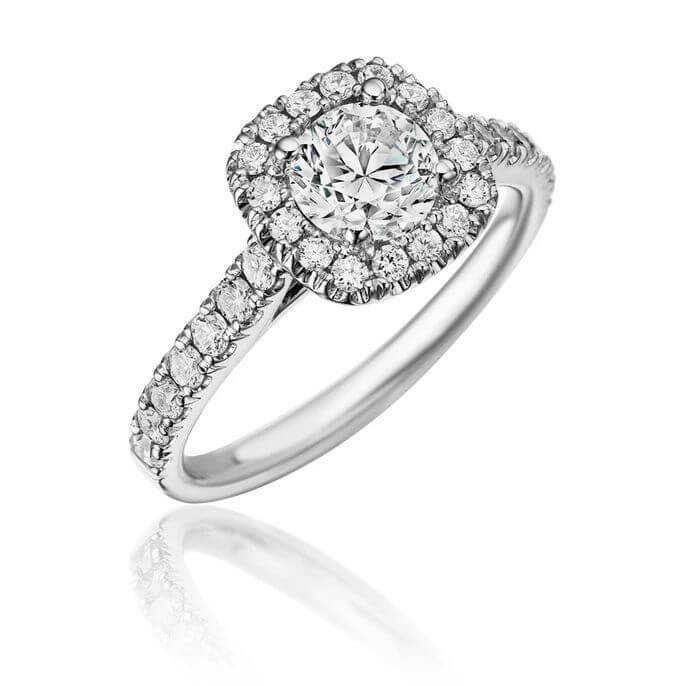
Hidden halos, however, have accent stones placed under the center stone, surrounding the center stone’s base. Hidden halos are different from traditional halos because you can’t see hidden halos when looking at the top of the engagement ring. Instead, hidden halos add subtle sparkle that you can see when looking at the side of the ring.
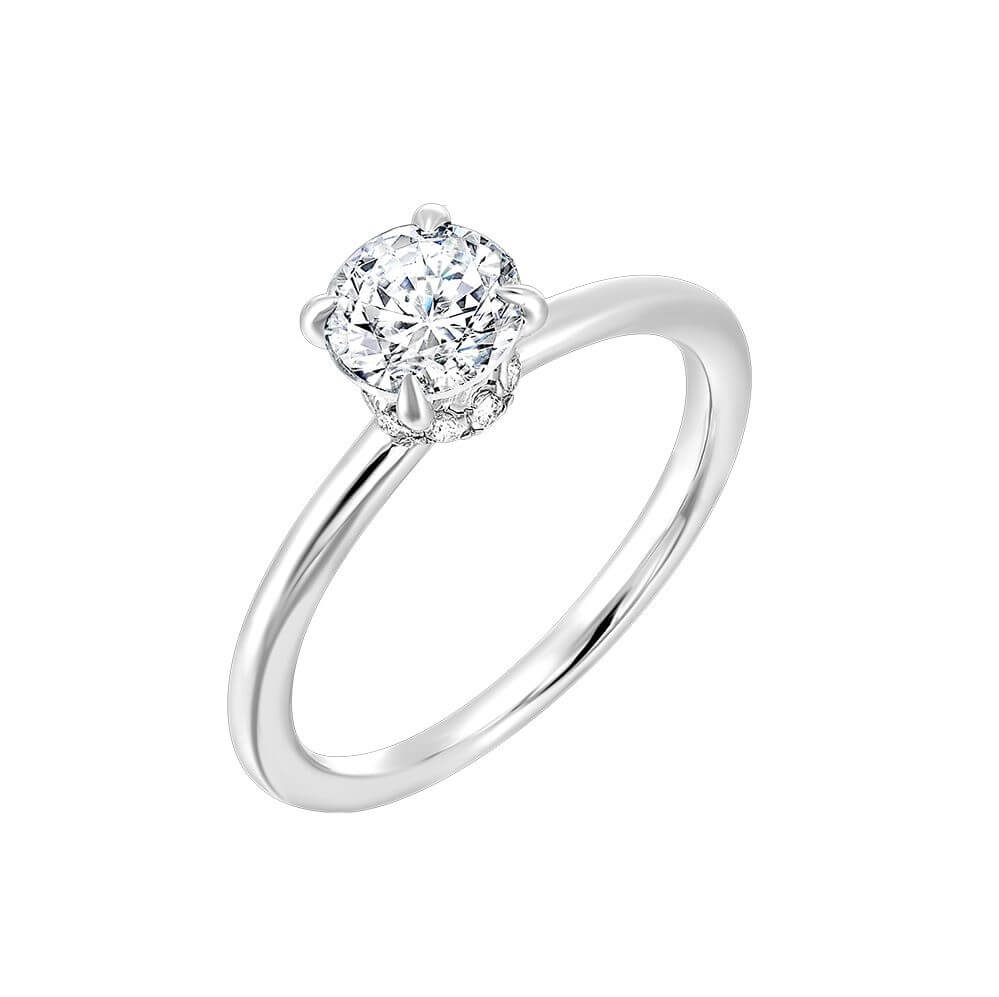
Three Stone Setting
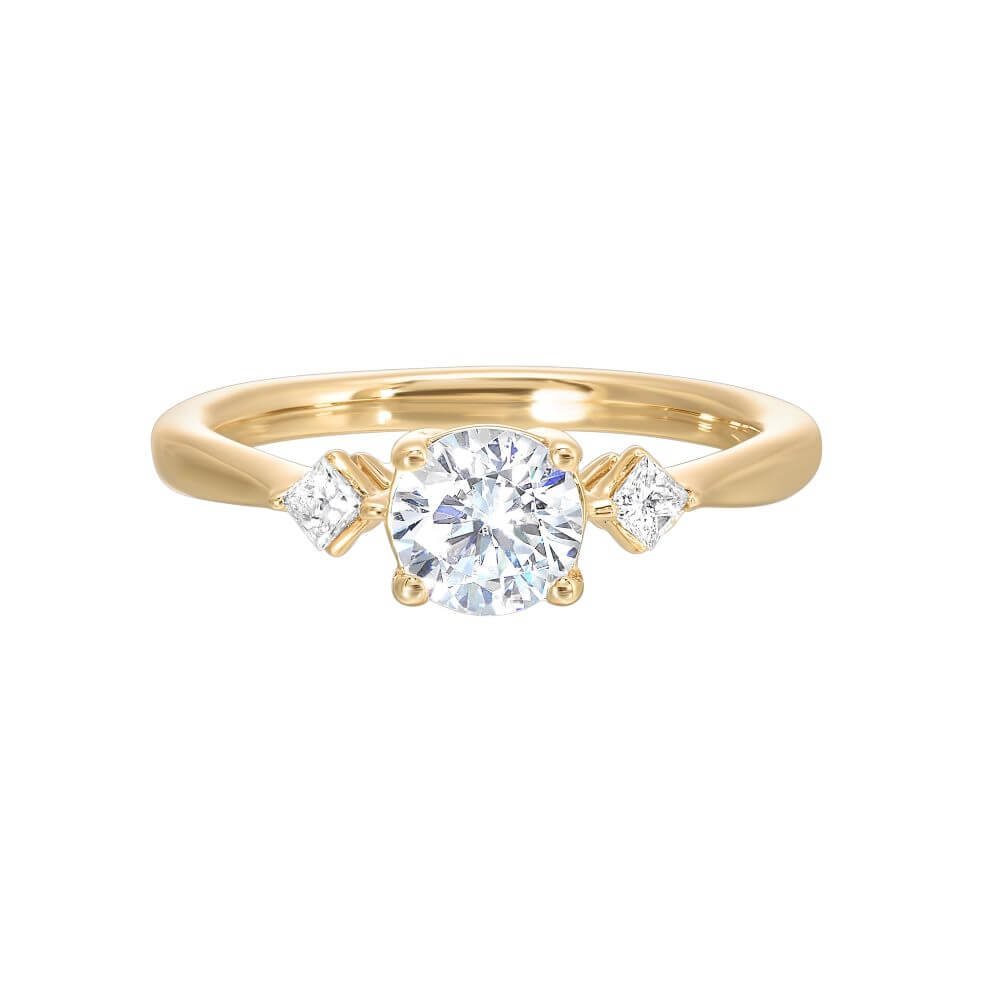
A three stone engagement ring features a center stone flanked by a stone on both sides. Often, the three stones in this style of engagement ring are used to symbolize the past, present, and future of a relationship.
Prong Setting

Prong set engagement rings are incredibly popular, consisting of stones secured with metal prongs.
Bezel Setting

A bezel set engagement ring features a center stone surrounded by a ring of metal. Bezel settings are actually safer for diamonds than diamonds secured by prongs because bezel settings surround and protect the entirety of the stone’s circumference, whereas prong settings do not.
Pavé Setting

Pavé set rings have small diamonds that line the ring’s band. These rings have a lot of sparkle, but the tiny stones can fall out of the ring easier than larger stones, especially if you tend to hit your ring against surfaces frequently.
Channel Setting

Channel set engagement rings feature stones held into place by two rows of metal as well as adjacent stones. This type of engagement ring setting does not require prongs or other methods to hold the stones in place as the channel prevents the stones from falling out.
Cathedral Setting

Cathedral settings give the impression that a ring’s center stone is larger. This setting features a center stone set higher up on the ring because of an elongated shank, and is easily identified when you look at the engagement ring from the side.
Selecting a Metal
Gold
Gold is the most popular metal for engagement rings, for several good reasons. For example, gold doesn’t tarnish, and isn’t easily harmed by many chemicals. Gold is also perfect for jewelry making as it’s very malleable.
Gold’s main downside, however, is that it’s incredibly soft when it’s in its purest state. This is why you typically will not find 24 karat gold jewelry, as it’s too easily bent and misshapen. To make gold more durable for jewelry, gold is combined with other metals in an alloy.
Typical gold alloys include 10, 14, and 18 karat gold.
Gold Karat & Percentage of Gold:
| Gold Karat | Percentage of Gold |
| 10 Karat | 41.7% |
| 14 Karat | 58.3% |
| 18 Karat | 75% |
| 24 Karat | 100% |
You can find white, yellow, and rose gold engagement rings in our stores. One thing to note is that if you decide on a white gold ring, over time the white gold will wear off, so it’ll have to be dipped in rhodium every so often to keep the metal a shiny, bright white.
Platinum
Platinum is another metal that’s commonly used in engagement rings, and is increasing in popularity because of its rarity and strength. Platinum is not as abundant as gold, making it more valuable. Platinum is also incredibly strong and not easily bent, so it’s perfect for durable, everyday jewelry.
Platinum, like gold, is also commonly alloyed with other metals. Typical platinum alloys include 90% platinum and 10% iridium, or 95% platinum and 5% ruthenium.
Choosing Your Stones
Diamonds
Diamonds are the most common gemstone used in engagement rings. When shopping for a diamond engagement ring, there are several aspects of diamonds to consider that you may not already be aware of, like diamond shape, diamond color, and diamond clarity. We’ll break down all the important things about diamonds that you’ll probably hear when engagement ring shopping.
Diamond Shape
There are many diamond shapes to choose from when shopping for an engagement ring. Some common diamond shapes include:



The 4 Cs
When selecting a diamond, the four most important things to consider are a diamond’s cut, color, clarity, and carat weight. These 4 qualities of a diamond affect both the diamond’s appearance and its price.
Cut
A diamond’s cut refers to how light interacts with the surfaces of the diamond. A diamond with a more ideal cut will have more sparkle than a diamond with a less ideal cut.
Color
Diamond color is graded on an alphabetical scale from D to Z, with D representing a completely colorless diamond, and Z a diamond that has light color to it. A diamond that’s closer to the colorless end of this scale is rarer than a diamond closer to the light color end of this scale.
Clarity
A diamond’s clarity refers to the amount and size of the imperfections in the diamond, known as inclusions and blemishes, as well as how visible they are under magnification and to the naked eye. Diamond clarity is graded on a scale of Flawless (Fl), Internally Flawless (IF), Very Very Slightly Included (VVS1, VVS2), Very Slightly Included (VS1, VS2), Slightly Included (S1, S2) to Included (I1, I2, I3). The less included a diamond is, or the closer on this scale that it is to flawless, the rarer the diamond.
Carat Weight
A diamond’s carat weight refers to its weight, not its size. Often, a diamond with a greater carat weight will also be larger in size than a diamond with a smaller carat weight, however depending on the diamond’s cut this may not always be true. Diamond carat weight impacts a diamond’s price because diamonds with a larger carat weight are rarer and more valuable.
To learn more about the 4Cs, please read our “The 4Cs of Diamonds” blog post.
Diamond Fluorescence
Did you know that some diamonds glow when exposed to UV light? Diamond fluorescence is a naturally occurring phenomenon that’s observed in some, but not all, diamonds at varying degrees. Diamond fluorescence isn’t a good or bad thing, but it can affect the appearance of your diamond, which is why it is one aspect about your diamonds that you may want to consider.
Treated Diamonds
Diamonds can undergo a few treatments to improve their clarity and change their color. To improve clarity, diamonds can undergo processes like laser drilling and fracture filling. To change their color, diamonds can undergo irradiation, annealing, high pressure-high temperature treatment, and coatings.
It’s important to know that treated diamonds can be more sensitive to heat and are more prone to breaking than untreated diamonds, depending on the specific treatment they have undergone. For this reason, you’ll want to know exactly what treatment your diamond has undergone, if any, and to make sure your jeweler knows about the treated diamond before any work is done on your engagement ring.
Gemstones
Your engagement ring doesn’t only have to feature diamonds, or it doesn’t have to have diamonds at all! There are many durable gemstones that you can set in your engagement ring, including sapphires, rubies, and emeralds. These stones can be a great way to add uniqueness and symbolism to your ring.
After You Propose
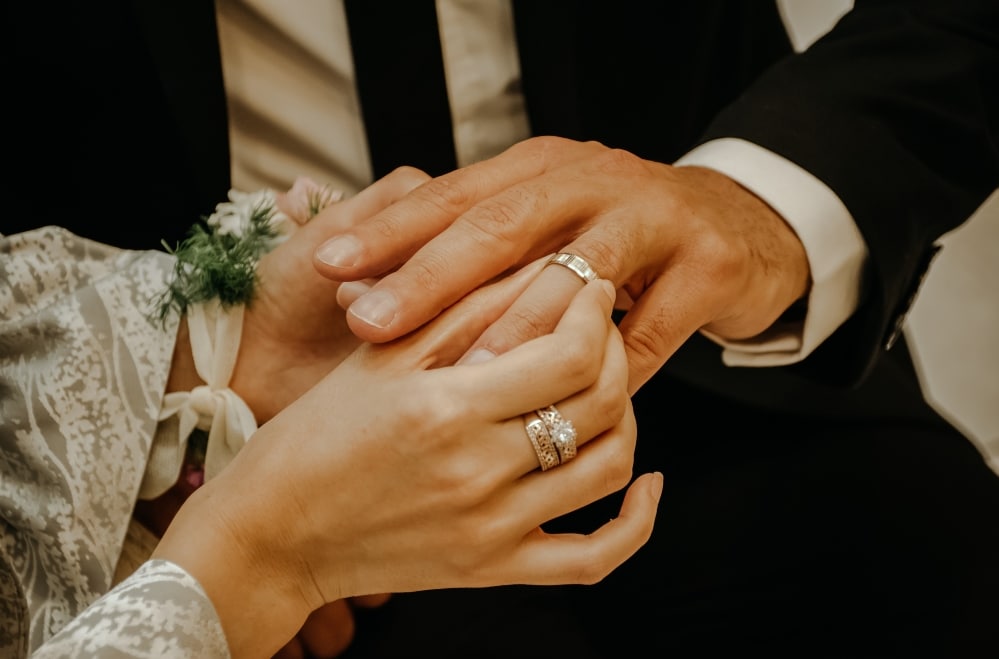
After you propose and she says yes, the next step is to come back into the store to pick out wedding bands! Every year we hold two Wedding Band Events where you can schedule an appointment with one of our sales associates to look at wedding bands. You can also stop in any time and our sales associates will work with you to find exactly what you’re looking for. To view some of the men’s and women’s wedding bands we carry in store, visit our website.
Engagement Rings from A to Z
- Carat: Unit that measures a diamond’s weight. 1 carat = 200 milligrams.
- Clarity: This is one of the “4 C’s” of diamonds. It refers to the amount and size of clarity characteristics on and within a diamond’s surface.
- Cubic Zirconia (CZ): A diamond simulant that’s often used in place of a diamond or other gemstone in engagement rings to show what the engagement ring will look like when a diamond has been mounted into it. CZs are not diamonds, and they have little value. See Semi-Mount.
- Cut: One of the 4 Cs of diamonds, a diamond’s cut refers to how light interacts with the surfaces of a diamond.
- Karat: The unit used to indicate how much gold is in a metal alloy.
- Mounting: A piece of jewelry’s metal structure that holds a gemstone into place.
- Prong: The small sections of metal that are used to hold a diamond into place on a ring.
- Rhodium: A white precious metal. Because gold is naturally yellow, to make white gold look bright white it is plated with rhodium.
- Semi-Mount: An engagement ring that either doesn’t have a center stone set into it or is set with a cubic zirconia. If a semi-mount is set with a cubic zirconia, typically this will be removed and replaced with a diamond.
- Shank: The band of a ring.
Shop Engagement Rings at Necker’s Jewelers
We have a huge selection of engagement rings online, and in our stores in DeWitt and Davenport, IA. We can also create custom engagement rings if you can’t find something you love in one of our stores.
-
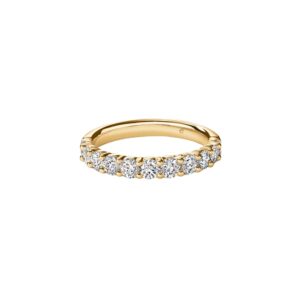 HEARTS ON FIRE SIGNATURE 11-STONE BAND UU29448YGHV1006500$5,400.00
HEARTS ON FIRE SIGNATURE 11-STONE BAND UU29448YGHV1006500$5,400.00 -
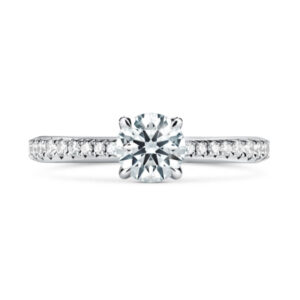 HEARTS ON FIRE VELA SOLITAIRE RING WITH DIAMOND BAND UU2640PTIV21006500$10,400.00
HEARTS ON FIRE VELA SOLITAIRE RING WITH DIAMOND BAND UU2640PTIV21006500$10,400.00 -
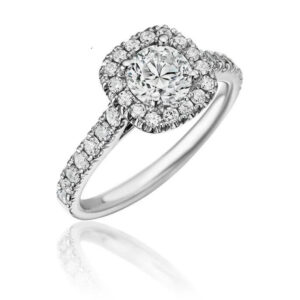 0.50 CT DIAMOND ENGAGEMENT RING RCU497-50$1,325.00
0.50 CT DIAMOND ENGAGEMENT RING RCU497-50$1,325.00 -
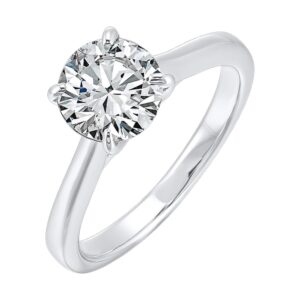 14K DIAMOND SOLITAIRE RING RG10967/70-4WF$3,600.00
14K DIAMOND SOLITAIRE RING RG10967/70-4WF$3,600.00 -
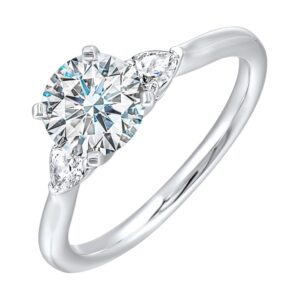 14K WHITE GOLD SEMI-MOUNT ENGAGEMENT RING W0240RN100SM-4WB$2,299.00
14K WHITE GOLD SEMI-MOUNT ENGAGEMENT RING W0240RN100SM-4WB$2,299.00 -
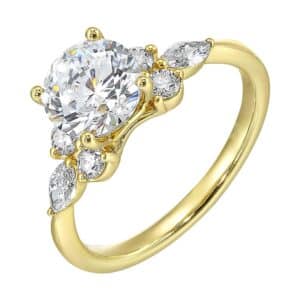 14K ROUND SEMI-MOUNT W4171RN200SM-4YB$3,300.00
14K ROUND SEMI-MOUNT W4171RN200SM-4YB$3,300.00 -
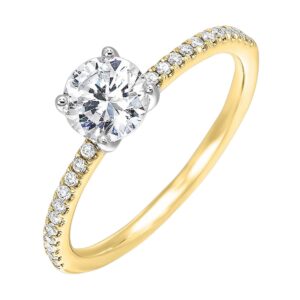 14K PERFECT LOVE SEMI-MOUNT W0431RN100SM-4YW89$1,999.00
14K PERFECT LOVE SEMI-MOUNT W0431RN100SM-4YW89$1,999.00 -
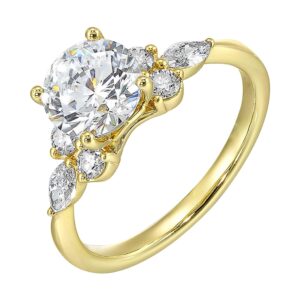 14K PERFECT LOVE SEMI-MOUNT W4171RN150SM-4Y89$2,899.00
14K PERFECT LOVE SEMI-MOUNT W4171RN150SM-4Y89$2,899.00 -
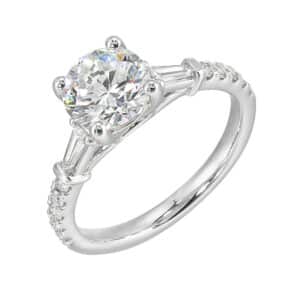 14K WHITE GOLD SEMI-MOUNT RING W4531RN150SM-4W89$2,999.00
14K WHITE GOLD SEMI-MOUNT RING W4531RN150SM-4W89$2,999.00


